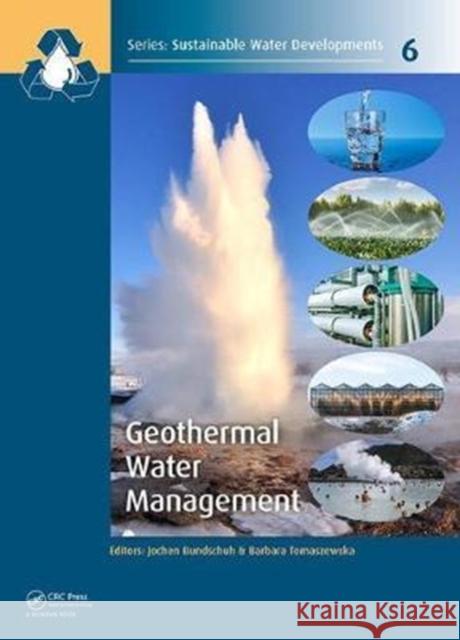Geothermal Water Management » książka
Geothermal Water Management
ISBN-13: 9781138027213 / Angielski / Twarda / 2017 / 402 str.
Geothermal Water Management
ISBN-13: 9781138027213 / Angielski / Twarda / 2017 / 402 str.
(netto: 1099,34 VAT: 5%)
Najniższa cena z 30 dni: 1057,85 zł
ok. 16-18 dni roboczych.
Darmowa dostawa!
Drinking water shortages in many regions of the world have often contributed to the development of water treatment technologies. Not only arid and semi-arid regions are increasingly exposed to water shortage, but also many other regions face limitations of the fresh water resources.
Geothermal energy is being used for heating and for power generating purposes in many countries. In some cases, cooled geothermal waters are discharged into the rivers. The use of cooled waters for drinking water purposes can be considered as an alternative method of disposing them.
This book discusses the effective use of geothermal water and renewable energy for future needs of a modern sustainable, effective management of water resources.It determines the potential of a desalination processes to reduce total dissolved solids (TDS), enhance removal of microelements (such as arsenic and boron) and also natural radionuclides so making geothermal waters suitable for discharge into surface waters or reuse for drinking, irrigation and other purposes. The key issue of the research is utilising the retentate, which contains a concentrate of the chemical elements and compounds removed from the geothermal water.
The research field includes crucial new areas of study:
An improvement in the management of freshwater resources through the use of residual geothermal water.
The recovery of mineral compounds with balneological and economic importance (the production of mineral resources).
The development of the balneotherapy, tourist and leisure sectors using geothermal water treatment.
Te book will be used as an incentive for what and how new and energy efficient technologies can be applied as an effective solution in residual geothermal water management to satisfy the continually increasing water demand for industrial, agricultural and drinking purposes in an economically sustainable way."











